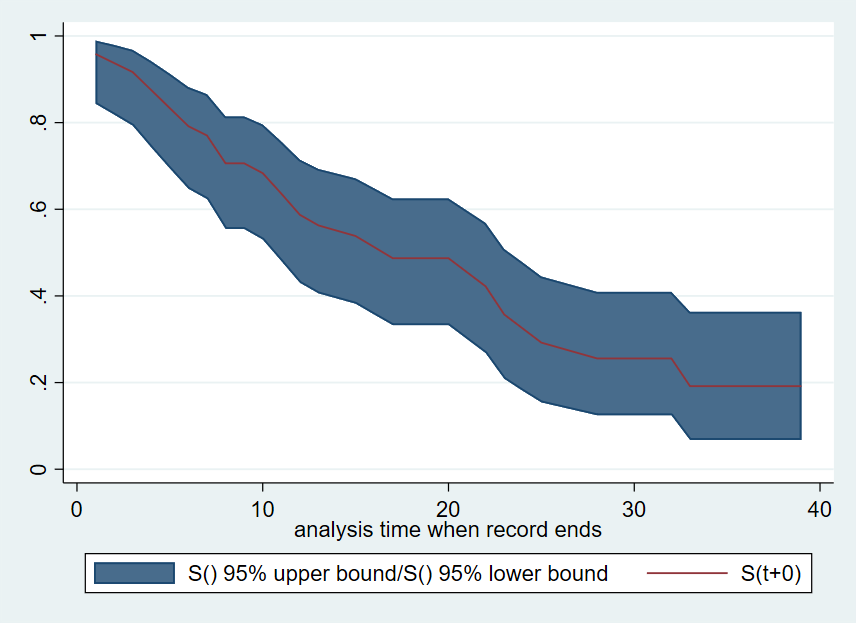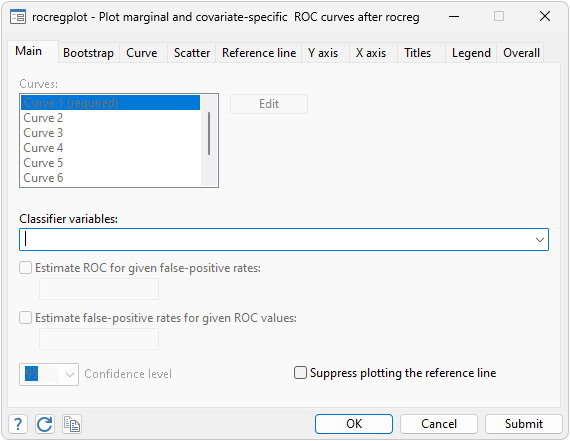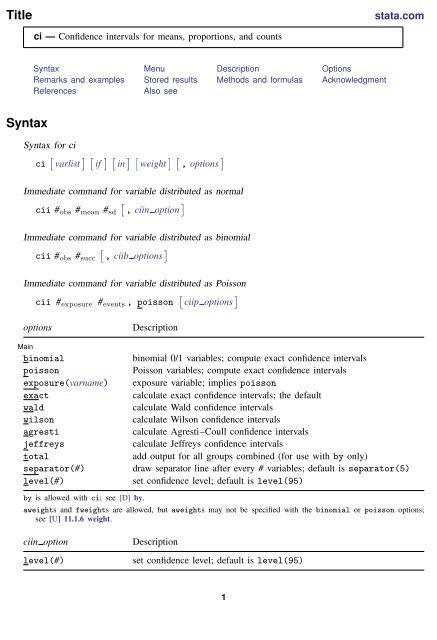

Stata Immediate command for variable distributed as binomialĬii proportions #obs #succ, exact level(#confidence level)

This command, returns the inverse reverse cumulative (upper-tail) Student's 𝑡 distribution where 𝑛 − 1 are the degrees of freedom and 𝑝 is the probability.What is the probability that T is less than or equal to 1.0?.Assume that a random sample of 20 people is observed and a test statistic is computed (t=1.0).Answer: Because it is a continuous distribution Pr(T>t)=Pr(T ≥ t) therefore P(T ≥ 1.645)=0.058.Reichenheim Instituto de Medicina Social Universidade do Estado do Rio de Janeiro, Brazil Abstract. 421428 Condence intervals for the kappa statistic Michael E. What is the probability that t is greater than 1.645? P(T≥1.645) ? The Stata Journal (2004) 4, Number 4, pp.Assume that a random sample of 20 people is observed and a test statistic is computed (t=1.645).It will compute the reverse cumulative (upper tail, P(T>t)) Student’s 𝑡 distribution, where (n-1) is the number of degrees of freedom and 𝑡 is the test statistic.The two commands that we will use to calculate the distribution probabilities are.Stata commands for the Student’s 𝒕 distribution This statistic emerge as solution of the estimation problem when the population variance is unknown in 1908 by Gosset better known by his pseudonym “Student” (See Rosner page 169). where S is the standard deviation of the sample.Let 𝑋 be an independent random sample from a normal distribution with known mean and unknown variance (𝑋1.Here is an example with 99. To specify a different level or to include multiple confidence intervals, use the levels() option.
STATA CONFIDENCE INTERVAL CODE
We can't compare your complete code or your graph, because you show neither.Confidence Intervals in Stata Liang Wu The default for coefplot is to draw 95 confidence intervals (or as set by set level). Scatter where group, ms(none) mla(N) mlabpos(12) mlabsize(*1.5)

Scatter mean group, ms(O) mcolor(blue) || ///īy(test, note("95% confidence intervals") legend(off)) /// * graph show sample sizes too, but where to show them is empirical Statsby mean=r(mean) ub=r(ub) lb=r(lb) N=r(N), by(group) clear : /// Note that if your version of Stata is not up-to-date, the syntax of ci will be different. Some choices depend on the large confidence intervals implied. This example takes your data example (almost executable code).

Although there are user-written programs, I lean towards statsby as a basic approach here.


 0 kommentar(er)
0 kommentar(er)
